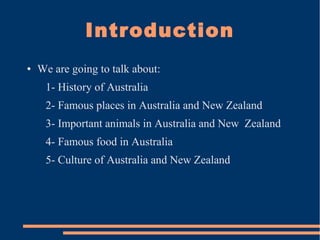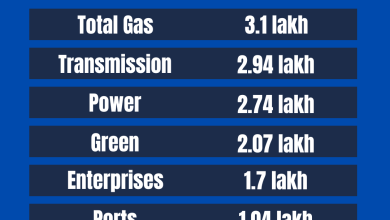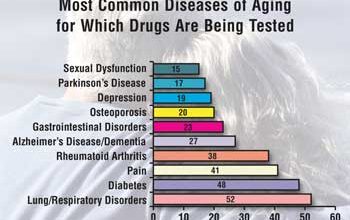Introduction And History of Australia: Unveiling Its Rich Legacy

Australia is a large country. It is also a continent. It is located in the Southern Hemisphere. The country is known for its unique wildlife, beautiful landscapes, and friendly people.

Credit: slideplayer.com
Indigenous People
The first people to live in Australia were the Indigenous Australians. They have lived here for over 60,000 years. They have a rich culture and history.
Aboriginal Culture
The Aboriginal people have many different languages and traditions. They are skilled in art, music, and storytelling. Their artwork often tells stories of their land and ancestors.
Torres Strait Islanders
Another group of Indigenous people are the Torres Strait Islanders. They live on islands between Australia and Papua New Guinea. They have their own unique culture and traditions.
European Discovery
European explorers came to Australia in the 1600s. The Dutch were the first Europeans to visit. They did not stay long.
James Cook
In 1770, Captain James Cook from England arrived. He mapped the east coast of Australia. He claimed the land for Britain.
British Settlement
The British decided to send prisoners to Australia. The First Fleet arrived in 1788. They landed in what is now Sydney.
Convicts
Many of the first settlers were convicts. They were sent to Australia as punishment. They helped build the new colony.
Free Settlers
Later, free settlers came to Australia. They wanted to start a new life. They farmed the land and built towns.
Gold Rush
In the 1850s, gold was discovered in Australia. People came from all over the world to find gold. This period is called the Gold Rush.
Impact Of Gold Rush
The Gold Rush brought many people to Australia. It helped the economy grow. New towns and cities were built. Many different cultures came together during this time.
Federation
In 1901, Australia became a federation. This means all the colonies joined together. They formed one nation under a single government.
Constitution
Australia created a constitution. This is a set of rules for how the country is run. It outlines the powers of the government and the rights of the people.

Credit: www.youtube.com
World Wars
Australia fought in both World War I and World War II. Many Australians served as soldiers. The wars had a big impact on the country.
Anzac Day
ANZAC Day is a special day in Australia. It is held on April 25th each year. It honors the soldiers who fought and died in wars.
Modern Australia
Today, Australia is a modern and diverse country. It is known for its high quality of life. It has a strong economy and beautiful environment.
Multicultural Society
Australia is home to people from many different backgrounds. This makes it a rich and diverse society. People celebrate many different cultures and traditions.
Environment
Australia has many unique plants and animals. It is known for its beautiful landscapes. These include beaches, deserts, and rainforests.
Economy
Australia has a strong economy. It is known for industries like mining, agriculture, and tourism. Many people come to visit Australia each year.
Frequently Asked Questions
What Is The Origin Of Australia’s Name?
Australia’s name comes from the Latin word “Australis,” meaning southern.
Who Were The First Inhabitants Of Australia?
Aboriginal Australians were the first inhabitants, living there for over 65,000 years.
When Did European Explorers First Reach Australia?
European explorers first reached Australia in the 17th century.
What Year Did Australia Become A Federation?
Australia became a federation on January 1, 1901.
Conclusion
Australia has a rich and fascinating history. From its Indigenous cultures to modern development, it is a unique country. It continues to grow and change, making it an exciting place to learn about and visit.




